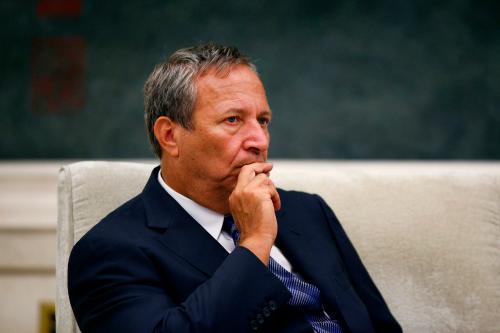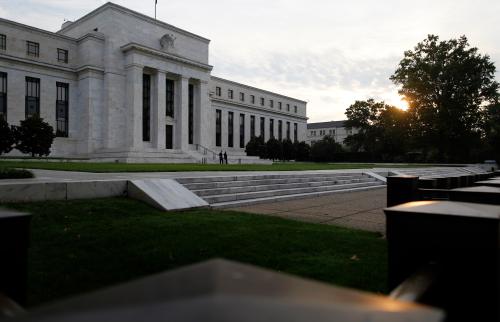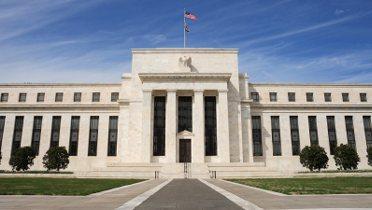During 1995-96 the yen-dollar exchange rate endured a cycle of violent fluctuation. From 100 yen at the beginning of 1995 the dollar fell to 80 yen in April. At that point worried central bankers in Japan, the United States, and Europe intervened and halted the dollar’s decline. The U.S. currency then trended sharply upward, most recently breaching the 120-yen barrier in late January. Concern for the strength of the yen was replaced by worries about its weakness: alarm grew that an undervalued yen would fan conflict over the U.S.-Japan current account balance and make life difficult for Japanese firms that import components from East Asian suppliers.
There is no question that this cycle created problems for both the Japanese and U.S. economies. It discouraged international trade by forcing firms to hedge exchange risk by purchasing “cover” in the forward market. And it created special difficulties for a Japan seeking to restructure and streamline a depressed economy. An exchange rate of Y80 intensified the pressure on Japanese exporters of manufactures. The problems experienced by the tradables sector deepened the distress of financial institutions holding claims on manufacturing firms. The economy’s deflationary crisis was thus compounded by the yen’s appreciation in 1995. And while depreciation in 1996 relieved the domestic profit squeeze, the yen’s volatility complicated investment planning. Japanese producers may be discouraged from developing sustainable outsourcing strategies and shifting production to other parts of East Asia. The sudden improvement in competitiveness may distract producers and policymakers from the search for a permanent solution to the structural problems of the Japanese economy.
Looking for a Quick Fix
The 1995-96 yen-dollar dustup elicited the predictable demands for international monetary reform. If the major industrialized countries that make up the Group of 7 could only agree to establish a new system of pegged-but-adjustable currencies or exchange rate target zones, observers argued, these painful exchange rate fluctuations could be avoided. And if the seven could not reach agreement as a group, then the countries whose currencies were being affected should establish a bilateral target zone. Thus, we have heard repeated calls for the establishment of a target zone for the yen-dollar rate or a common basket peg, surrounded by fluctuation bands of plus-and-minus 10 percent, for nine East Asian currencies (those of China, Hong Kong, Indonesia, Korea, Malaysia, the Philippines, Singapore, Taiwan, and Thailand).
The matter, unfortunately, is not so simple. Stabilizing exchange rates by establishing a new system of pegs, bands, or target zones would require significant compromises of domestic policy autonomy. Intervention by central banks is effective only if it sends credible signals of future shifts in monetary and fiscal policies–that is, when there is no conflict between domestic and international economic policies.
But in today’s world, conflicts between domestic and international economic objectives are inevitable. The removal of controls on international capital movements and the development of modern information-processing technologies over the past several decades permit billions of dollars to be traded across borders at the stroke of a key. The domestic policy independence that capital controls once afforded national monetary and fiscal authorities has become a thing of the past. Currency traders, no longer limited by controls, are free to attack an exchange rate as soon as they begin to suspect that the government is less than totally committed to defending it–a practice that can greatly increase the cost of defending the currency peg. With the end of the Cold War and the disintegration of dominant political coalitions in countries like Italy and Japan, governments are necessarily fragile and hesitant to put the domestic economy through the wringer to defend the exchange rate at any cost. Weak governments find it infeasible to pursue the international economic policies needed to maintain a durable currency peg.
Thus schemes to peg the dollar, the yen, and the deutsche mark against one another, as had been the practice until the Bretton Woods international monetary system collapsed in the early 1970s will prove unavailing. Exchange rates between these currencies will continue to float against each other.
Small Countries, Big Problem
For the United States and Japan, large countries that remain relatively closed to international transactions, this arrangement, while painful, is bearable. For small open economies, where a larger share of production is typically sold on international markets, the dislocations caused by exchange rate swings can be excruciating. Because the financial sector is small relative to global financial markets, a shift in market sentiment or in interest rates in the United States can elicit a flood of capital in flows that leads to a dramatic real appreciation or massive outflows that cause the exchange rate to depreciate alarmingly.
Whether these small open economies are in Europe, Latin America, or East Asia, they find it exceedingly difficult to live with exchange rate fluctuations. They are thus prepared to take drastic steps to limit exchange rate volatility. In some cases they have done so by replacing their central banks with currency boards. This approach has been used by countries with exceptional problems with inflation and financial stability, such as Argentina and Estonia. A parliamentary statute or constitutional amendment requires the board to tie the domestic currency to that of a major trading partner. Argentina’s currency board can issue a dollar’s worth of currency only when acquiring a dollar of reserves, effectively pegging the peso-dollar exchange rate at one to one. Currency traders do not question the monetary authorities’ commitment to the currency peg, since the latter are required by law to defend it. But a currency board leaves the monetary authority little leeway to act as a lender of last resort in the event of problems in the banking system. And once the inflationary crisis has passed, countries find it hard to eliminate their currency board and reacquire monetary flexibility without exciting fears of a return to the bad old days. A person with an overeating disorder may be inclined to padlock the refrigerator and throw away the key, but he may regret the extremity of the step once starvation sets in.
Another solution to the problem of exchange rate instability is a monetary union, like that the members of the European Union are currently seeking to establish. Monetary unification banishes exchange rate volatility by abolishing the exchange rate. But it requires the participants to share responsibility for their common monetary policy. Conveniently for the small open economies of Europe, the larger partner they wish to join in monetary union, Germany, may be prepared to compromise its monetary autonomy in return for reacquiring a foreign policy role in the context of a European Union foreign policy.
A Single Asian Currency?
The question for the 21st century is whether analogous monetary blocs will form in East Asia (and, for that matter, in the Western Hemisphere). With the dollar, the yen, and the single European currency floating against one another, other small open economies will be tempted to link up to one of the three. But the linkage will be possible only if accompanied by radical changes in institutional arrangements like those contemplated by the European Union. The spread of capital mobility and political democratization will make it prohibitively difficult to peg exchange rates unilaterally. Pegging will require international cooperation, and effective cooperation will require measures akin to monetary unification.
The day when the countries of East Asia including Japan will be prepared to create a single Asian currency (or, for that matter, when the countries of the Western Hemisphere are prepared to join the United States in a monetary union) remains far away. The political preconditions for monetary unification are not in place. Operating a monetary union requires some pooling of political responsibility. History provides very different prospects for this in Western Europe and East Asia. Proponents of European integration can trace their antecedents back for hundreds of years. Jeremy Bentham advocated a European assembly, Jean-Jacques Rousseau a European federation, Henri Saint-Simon a European monarch and parliament. By the middle of the 19th century, intellectuals like Victor Hugo could speak of a United States of Europe. In the 1920s, the Pan-European Union lobbied for a European federation and attracted the support of Aristide Briand and Edouard Herriot, future premiers of France. Konrad Adenauer and Georges Pompidou, two leaders of the postwar process of European integration, were members of the Pan-European Union. The ideal of European integration is intimately connected with the liberal and democratic principles of the European Enlightenment and has roots in centuries of European history.
East Asia, in contrast, lacks a comparable tradition of political solidarity. It lacks a Jean Monet or Paul Henri Spaak to speak for regional integration. In part this reflects the ideological distance between China’s communist government and market-oriented regimes elsewhere in East Asia. By contrast, in postwar Western Europe, variants of the social market economy were embraced by virtually all the members of the present-day European Union.
At a deeper level, East Asia lacks a Benthamite-Rousseauian-Saint Simonian heritage of collective democratic governance through integration. As Peter Katzenstein puts it, ?the notion of united sovereignty . . . central to the conception of continental European states, does not capture Asian political realities.” Not only in China do the regions resist the attempts of the center to exercise its political will through the operation of political and legal institutions. The idea of a centralized state with a monopoly of force that regiments its citizens through the superimposition of a common set of institutions is a European conception, not an Asian one. Asian civil society is structured by ritual, ceremony, and economic networks as much as by force and law.
Consequently, integrationist initiatives in Asia have proceeded not through the creation of strong supranational institutions but by establishing loose networks of cooperation. It is revealing that the Asia Pacific Economic Cooperation forum, which is essentially just a consultative body, has succeeded where initiatives to create smaller, more cohesive Asian analogues to the European Economic Community or the European Free Trade Association have not.
Gazing far into the 21st century, one can imagine the development of a single Asian currency analogous to the Euro, the prospective single European currency. In a world of open international capital markets and politicized domestic policy settings, that will be the only alternative to floating exchange rates. As the economies of East Asia grow still more open and interdependent, pressure will build to work toward this goal. But as yet the political preconditions are not in place. An Asian monetary union is at best a very distant prospect.



Commentary
International Monetary Arrangements: Is There a Monetary Union in Asia’s Future?
March 1, 1997